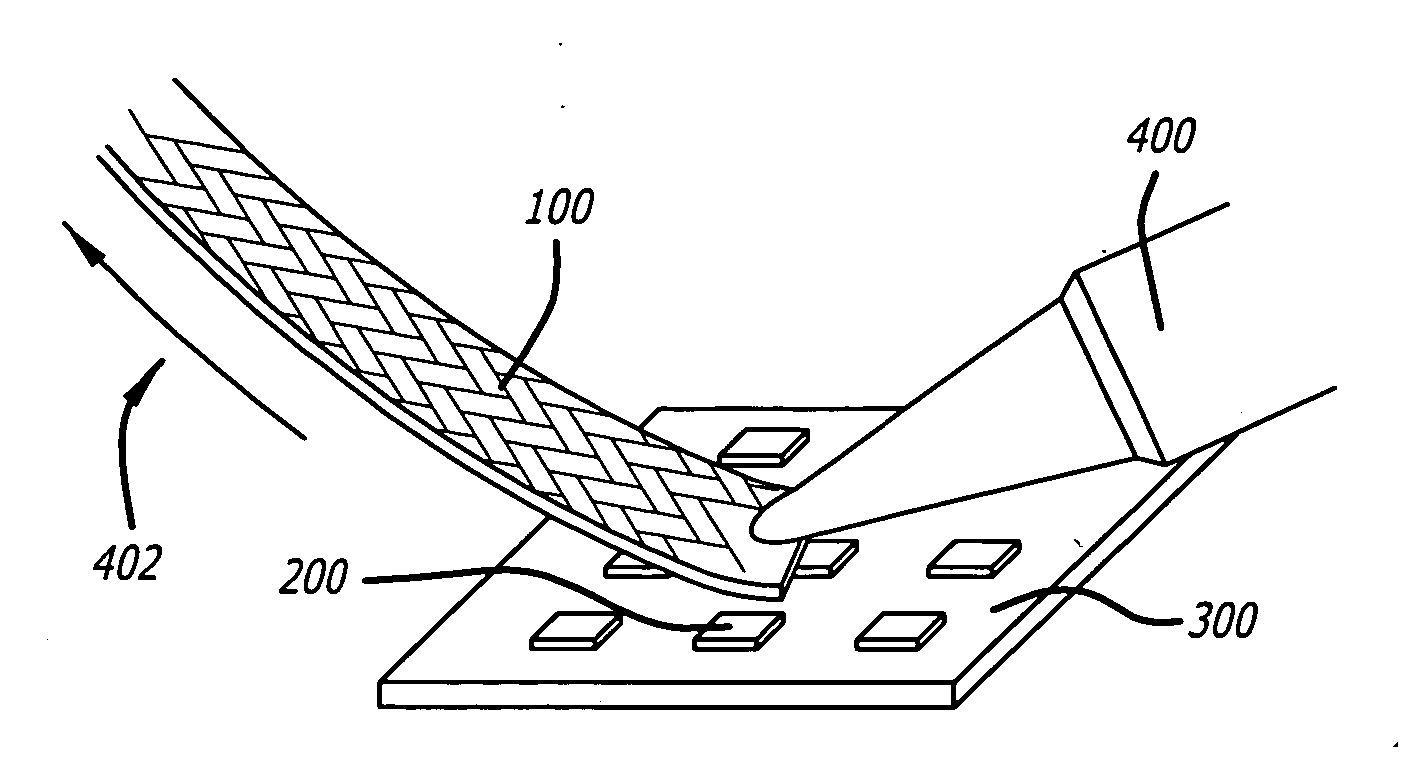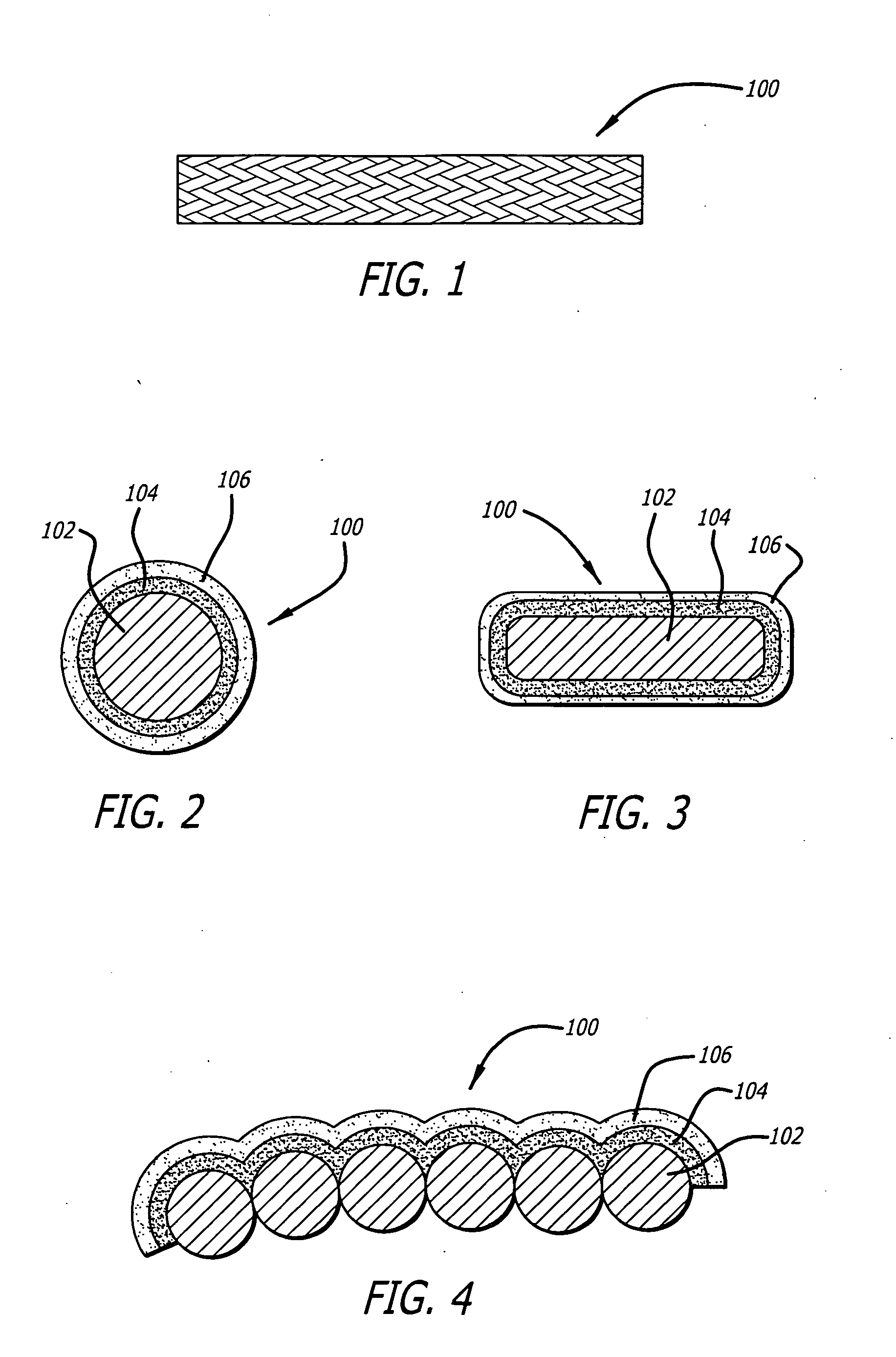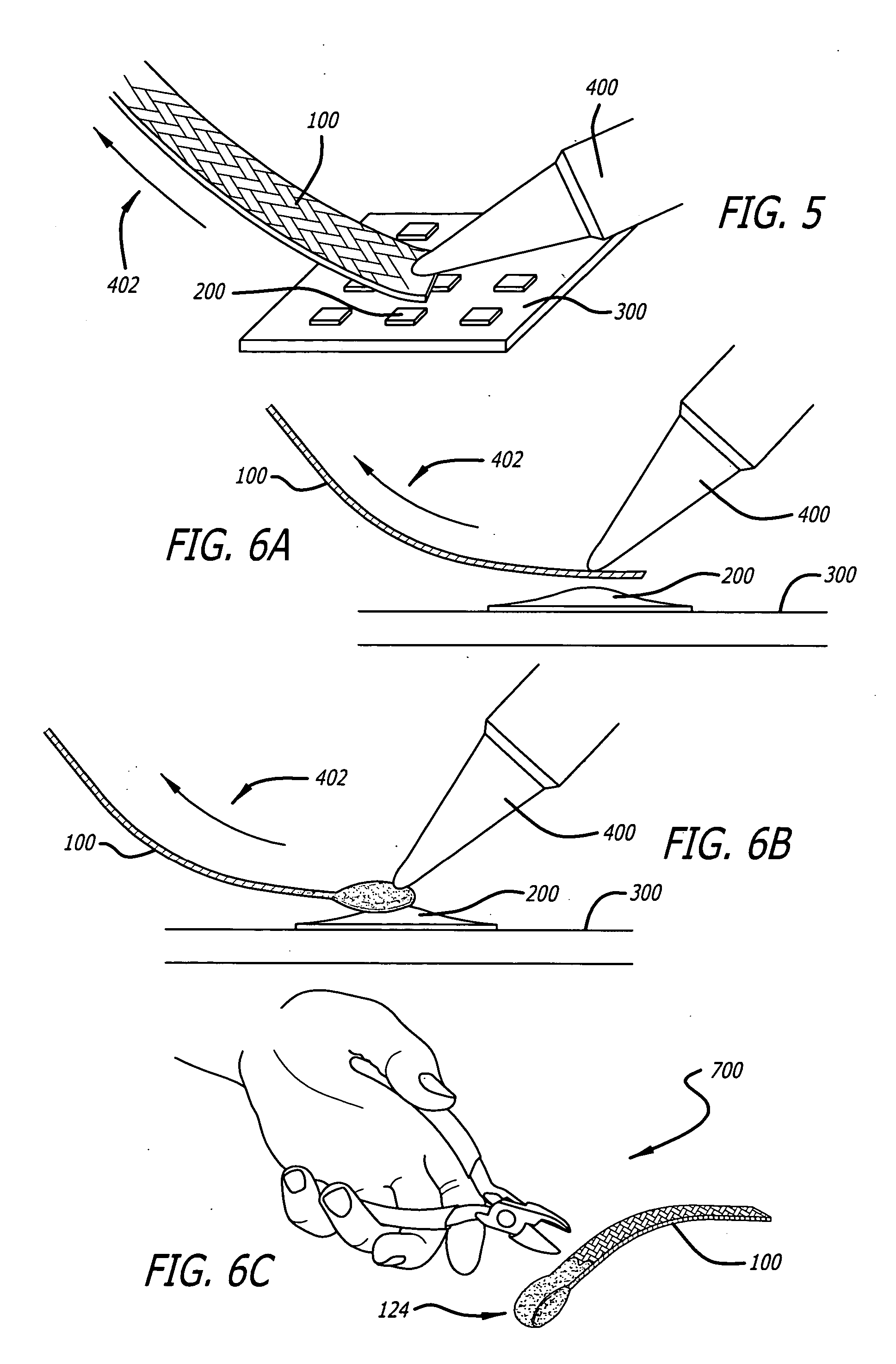Desoldering wick for lead-free solder
- Summary
- Abstract
- Description
- Claims
- Application Information
AI Technical Summary
Benefits of technology
Problems solved by technology
Method used
Image
Examples
Embodiment Construction
[0032] Referring to the drawings wherein like reference numerals designate like elements, FIG. 1 illustrates a preferred embodiment of a desoldering wick shown generally at 100 of the present invention. The desoldering wick 100 comprises a plurality of braided metal filaments 102 which are plated with a first metal coat 104 and a subsequent second noble metal coat 106. Between ninety and one hundred and twenty (and preferably one hundred and five) filaments are braided together to form the wick. The desoldering wick may be one to eight mm in width, typically four mm. Generally, the metal filaments 102 are comprised of copper, however, other suitable metals may be employed. Additionally, the metal filaments 102 are typically sixty μm to one hundred μm in diameter. The first metal coat 104 may be an elemental metal or a metal alloy. More specifically, the elemental metal of the first metal coat 104 may be, for example, tin, and the metal alloy of the first metal coat 104 may be a tin ...
PUM
| Property | Measurement | Unit |
|---|---|---|
| Length | aaaaa | aaaaa |
| Length | aaaaa | aaaaa |
| Length | aaaaa | aaaaa |
Abstract
Description
Claims
Application Information
 Login to View More
Login to View More - R&D
- Intellectual Property
- Life Sciences
- Materials
- Tech Scout
- Unparalleled Data Quality
- Higher Quality Content
- 60% Fewer Hallucinations
Browse by: Latest US Patents, China's latest patents, Technical Efficacy Thesaurus, Application Domain, Technology Topic, Popular Technical Reports.
© 2025 PatSnap. All rights reserved.Legal|Privacy policy|Modern Slavery Act Transparency Statement|Sitemap|About US| Contact US: help@patsnap.com



